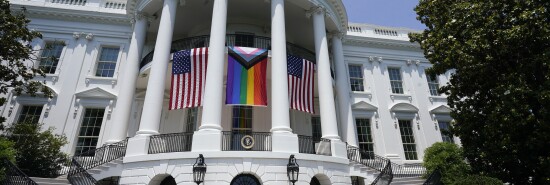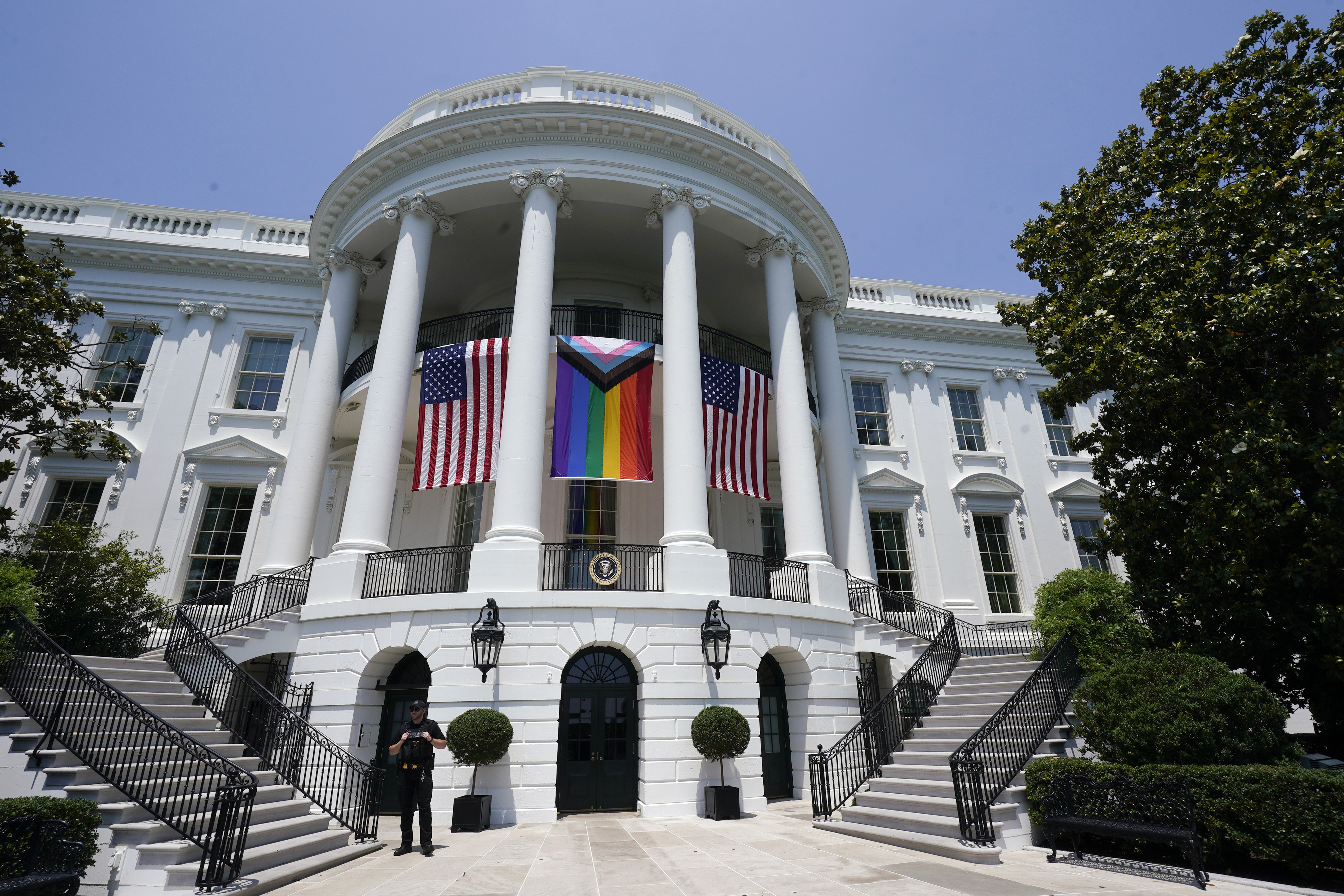
Courage, Pride, and the Biden White House
Byron York
COURAGE, PRIDE, AND THE BIDEN WHITE HOUSE. On June 6, President Joe Biden marked the 79th anniversary of the D-Day invasion by issuing a brief statement praising the “brave service members” who “volunteered to lay down their lives for our liberty.” According to the Department of Defense, more than 9,000 Allied troops were killed or wounded during the first 24 hours of the invasion.
A week earlier, Biden issued a somewhat more expansive proclamation marking Memorial Day. He again celebrated America’s “brave service members,” calling them “courageous people [who] answered duty’s call” and who “bravely kept burning” the light of liberty around the world.
Combining Biden’s D-Day and Memorial Day proclamations, the president used some form of the word “bravery” three times and “courage” once. It’s fair to say that Biden was not reaching for the rhetorical heights in either statement. As it turned out, he was saving his most fulsome praise of American bravery and courage for another occasion.
Biden has declared June “Lesbian, Gay, Bisexual, Transgender, Queer, and Intersex Pride Month.” The president issued a proclamation and held a celebratory event on June 10 on the White House’s South Lawn. In the proclamation and his remarks at the event, Biden praised the courage and bravery of lesbian, gay, bisexual, transgender, queer, and intersex people far more than he praised the courage and bravery of military forces who defended liberty, at enormous personal risk, throughout American history.
Biden’s “Lesbian, Gay, Bisexual, Transgender, Queer, and Intersex Pride Month” proclamation began by applauding the patrons of a gay bar in New York who, in 1969, resisted a police raid in what became known as the Stonewall riot. “In June 1969, a courageous group of Americans rose up to protest the violence and marginalization they faced in what became known as the Stonewall Uprising,” Biden said. “Their courage sparked a civil rights movement for the liberation of the LGBTQI+ community.”
Biden praised the bar customers who “bravely stood their ground” against New York City police in 1969, and then he extended that praise to “generations of LGBTQI+ people” who have “fought bravely to live openly and authentically.” Finally, he cited the “LGBTQI+ young people and their parents,” who he said are “demonstrating unimaginable courage” by protesting “discriminatory laws” in various states.
Subscribe today to the Washington Examiner magazine that will keep you up to date with what’s going on in Washington. SUBSCRIBE NOW: Just $1.00 an issue!
That’s a lot of courage and bravery — more citations of those virtues than Biden managed in his D-Day and Memorial Day proclamations combined. But it was nothing compared to the remarks the president would give at the White House Pride Day celebration just four days after his D-Day commemoration.
“In all of you — and this is not hyperbole — in all of you, what I see is courage,” Biden told the crowd. “I mean it sincerely from the bottom of my — I see courage. Courage.” And then:
And those who were in the generation before you who stepped up, it’s even more courage. They worried not only for their lives, they worried for their jobs. They worried for whether or not they could even be involved at all in their community. Imagine what it took 40 years ago to stand up and say, ‘I’m gay.’ What would have happened? No, I mean people who had to fear for their lives just acknowledging it — just acknowledging it. We all talk about courage. Well, I see more courage on this lawn than I’ve seen in any time in the recent past.
In all, including other references, Biden said some form of “courage” eight times and some form of “bravery” once, when he called the crowd “some of the bravest” people he has ever known, and that does not count the times first lady Jill Biden or other speakers used them. (“For so many of you, just coming to this event is an act of bravery,” Jill Biden said.)
For the event, the Biden team hung a huge Pride flag from the White House balcony, occupying the center space between an American flag on either side. It made for quite a photo, as if the Biden White House were placing the symbol of a particular constituency at a more central place in the U.S. government than the American flag itself. The Biden administration also bathed the White House in the colors of the Pride flag at night.

The flag display appeared to violate the U.S. Flag Code, which dictates the ways in which the American flag can be properly displayed. One provision in the code says, “The flag of the United States of America should be at the center and at the highest point of the group when a number of flags of states or localities or pennants of societies are grouped and displayed from staffs.”
What was going on? Shouldn’t there be some sort of internal balance in a White House so that the president of the U.S. does not heap more praise on the attendees of a “Lesbian, Gay, Bisexual, Transgender, Queer, and Intersex Pride Month” gathering than on the Americans who stormed the beaches at Normandy? Shouldn’t there be some sort of governor who keeps the hyperbole machine from running out of control? Shouldn’t there be some sense of proportion?
There are all sorts of courage. People show courage every day. Some do so by sticking to their beliefs even if it costs them their job or social standing. Some do it by rescuing others in dire situations. But courage in battle, done on behalf of the U.S., is something else.
Like D-Day. In 1960, the military historian S.L.A. Marshall published an account of the landing at Omaha Beach. The details of his piece, drawn from previously unheard witness accounts, portrayed a scene of more horror, and even more bravery, than had characterized earlier popular versions. Here is a small sample:
At exactly 6:36 A.M. ramps are dropped along the boat line and the men jump off in water anywhere from waist deep to higher than a man’s head. This is the signal awaited by the Germans atop the bluff. Already pounded by mortars, the floundering line is instantly swept by crossing machine-gun fires from both ends of the beach. Able Company has planned to wade ashore in three files from each boat, center file going first, then flank files peeling off to right and left. The first men out try to do it but are ripped apart before they can make five yards. Even the lightly wounded die by drowning, doomed by the waterlogging of their overloaded packs.
The incredible thing about the story is not as much the horrific attacks the first wave of men endured but that in the face of such resistance, the men kept coming and kept coming until there were thousands of Allied forces on the beach to begin the drive to Germany.
Today, there has to be a way for the White House to distinguish between that kind of bravery and the efforts of activists seeking to redefine pregnant women as “birthing persons” or bring “Drag Queen Story Hour” to schools. Making the distinction shouldn’t be hard, but it appears beyond Biden’s abilities.
For a deeper dive into many of the topics covered in the Daily Memo, please listen to my podcast, The Byron York Show — available on the Ricochet Audio Network and everywhere else podcasts can be found. You can use this link to subscribe.
